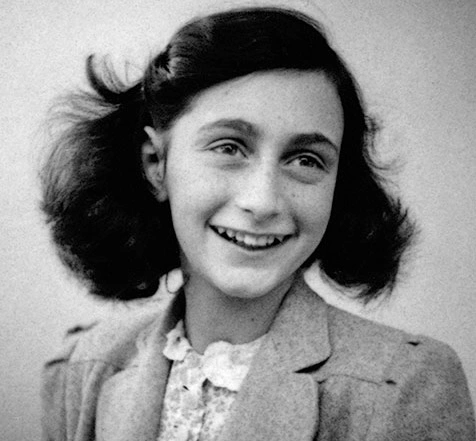Frank, Anne
Publié le 22/02/2012

Extrait du document

Frank, Anne (1929–1945) young Holocaust
victim whose published diary moved
the world
Annelies Marie Frank, better known as Anne
Frank, was born in Frankfurt am Main, Germany,
of Jewish parents. Her father, Otto Frank, a prosperous
Frankfurt businessman, realized the gravity
of Nazi anti-Semitism and, in 1933, left
Germany with his wife and two daughters for
what he assumed would be the safe haven of
Amsterdam. The German invasion of the Netherlands
came in May 1940, and the following
year, as the German occupiers instituted anti-
Semitic policies in the Netherlands, Anne Frank
was forced to transfer from a public school to a
Jewish one. As anti-Semitism escalated to the
Final Solution in the occupied countries, Otto
Frank understood that he and his family would be
deported to what he assumed was a forced-labor
camp. To escape this fate, Frank took his family
into hiding, with four other Jews, on July 9, 1942.
They found refuge in the back room office and
warehouse of Frank's wholesale food business.
Christian Dutch citizens, sympathetic to the plight
of the Jews, smuggled in food and other supplies at
great risk to themselves. However, not all Netherlanders
were so noble. Informers tipped off the
local Gestapo, which raided the Franks' hiding
place on August 4, 1944. The family was sent to a
local transit camp at Westerbork and thence, on
September 3, 1944, to Auschwitz concentration
camp in Poland. From here, Anne and her sister
Margot were transferred to Bergen-Belsen concentration
camp in October. Their transportation
to the camps had been the last from the Netherlands.
Anne's mother died in January, just days
before Auschwitz was evacuated on January 18,
1945. Anne and her sister succumbed to typhus,
epidemic in the camps, in March 1945, shortly
before Bergen-Belsen was liberated by the Allies.
Alone among his family, Otto Frank survived and
was liberated from Auschwitz by Red Army troops
on January 27, 1945.
Even after their deportation, the Franks had not
been abandoned by their Dutch friends. They
found in the Franks' hiding place numerous papers
and personal effects the Gestapo had failed to confiscate.
They saved these, and when Otto Frank
returned to Amsterdam, they gave the material to
him. He discovered a diary Anne had kept during
their desperate confinement. Frank edited it (to
some extent bowdlerizing it), and it was published
in Dutch in 1947 as Diary of a Young Girl. An
extraordinary document, it is an intimate view of
the Holocaust through the eyes of an adolescent
girl, a vision the more poignant because the diary
records all that interested any girl of Anne's age,
including her growth into young womanhood, in
addition to the terror outside Otto Frank's back
room. It is a profoundly human document and a
monument to the durability of the human spirit
Anne Frank even in the greatest adversity. "In spite of everything,"
Anne wrote in a particularly memorable
passage, "I still believe that people are really good
at heart."
Diary of a Young Girl, often called "The Diary of
Anne Frank," has appeared in more than 50 languages
and is certainly the most widely read document
to emerge from the Holocaust. In 1995, a new
English translation was published, which restored
extensive material Otto Frank had expunged from
his original version. The government of the Netherlands
and the city of Amsterdam preserve the
Frank family's hiding place, on the Prinsengracht
Canal, as a museum and memorial.
Liens utiles
- Le journal d'Anne Frank bouleverse le monde entier
- CHARLES ET ANNE Leonhard Frank (résumé)
- histoire des arts anne frank
- Anne frank
- Frank (Annelies Marie Frank, dite Anne)
